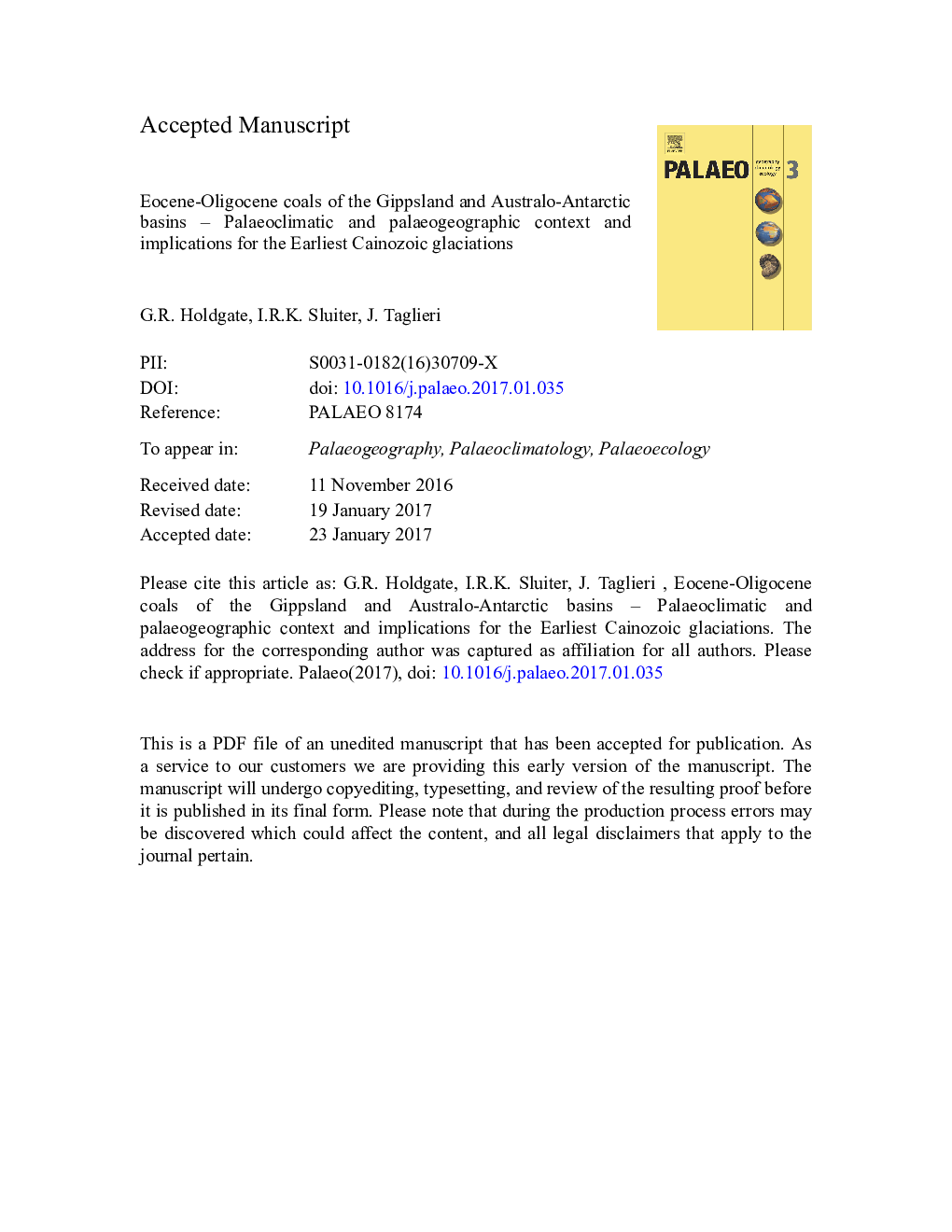| Article ID | Journal | Published Year | Pages | File Type |
|---|---|---|---|---|
| 5755874 | Palaeogeography, Palaeoclimatology, Palaeoecology | 2017 | 56 Pages |
Abstract
A number of contemporaneous Middle to Late Eocene brown coals occurred in near-coastal settings across 1200Â km of southern Australia. Palaeogeographically, all these coal basins faced the Australo-Antarctic Gulf and have a much lower gymnosperm proportion (<Â 10%), low Nothofagus proportion (<Â 10%), but very high (non-Nothofagus) angiosperms proportion. This suggests a different climatic regime separated a cooler and wetter Gippsland Basin flora that responded to the cooler Proto-Ross Sea Gyre rotating around a wide Pacific Ocean, and a warm-wet climate associated with a warm proto-Leeuwin current of the Australo-Antarctic Gulf.
Related Topics
Physical Sciences and Engineering
Earth and Planetary Sciences
Earth-Surface Processes
Authors
G.R. Holdgate, I.R.K. Sluiter, J. Taglieri,
